Categories
- Argentina
- Chile
- Antarctica
- Easter Island
- Falklands (Malvinas)
- Bolivia
- Peru
- Uruguay
- Paraguay
- Brazil
- Venezuela
- Colombia
- Ecuador
- Galapagos
- Panama
- Costa Rica
- Cuba
- Nicaragua
- Honduras
- El Salvador
- Guatemala
- Belize
- Mexico
- Latin American Xmas
Pages
- Street Art of Buenos Aires
- A week in Buenos Aires
- The Jesuit Missions in South America
- Contact Us
- Map of Central America
- First week in Latin America – October 2009
- Home Page
- Map of South America
Archives
- October 2011 (3)
- September 2011 (9)
- August 2011 (10)
- July 2011 (7)
- June 2011 (6)
- May 2011 (11)
- April 2011 (10)
- March 2011 (4)
- February 2011 (5)
- January 2011 (6)
- December 2010 (6)
- November 2010 (4)
- October 2010 (8)
- September 2010 (5)
- August 2010 (7)
- July 2010 (5)
- June 2010 (6)
- May 2010 (6)
- April 2010 (7)
- March 2010 (6)
- February 2010 (9)
- January 2010 (4)
- December 2009 (8)
- November 2009 (5)
- October 2009 (2)
Crossing the Andes by Foot
27th November 2010
There was a light dusting of snow on Pico Bolívar (5000 meters) towering above Mérida [7] when we arrived from Coro [6]. Mérida lies at an altitude 1600 meters in a valley of the northern Andes. We met our guide Carlos from Natoura and organised a 5 day trek crossing the Andes beginning the next day.
.
After driving to the end of the road at 3200 metres, we began climbing to 3500 metres, before descending down an old Spanish mule path, leaving the modern world behind. We spent our first night camped outside an abandoned house at 3000 metres where Carlos cooked a delicious meal of smoked pork chops. It was cold but there was a full moon and no rain.
.
Day 2 we descended steeply down to 1600 metres through cloud forest on a slippery, but beautiful rocky path. All along the way were birds, butterflies, flowers, numerous waterfalls and river crossings sometimes via suspended bridges, sometimes hopping from rock to rock. Our reward at the end of the day was a welcoming posada in the small, isolated village of Carrizal – population 30 and 10 hours walk from the nearest road. Once the wet boots came off, we were served mountain coffee grown and processed right there. The rain was beating down on the tin roof as we sat and watched the oro pendula birds coming and going from their long hanging nests high in a nearby tree. Dinner was salted meat and delicious cheese smoked over a wood fire in the posada kitchen.
.
Thankfully the walking was easier the next day although the path was overgrown. We stopped at a lone house after a few hours where we shared more mountain coffee and freshly prepared sugar cane juice with the family. Continuing on, we climbed steeply up a path of pre-Hispanic, moss covered steps to overnight in the posada at San José, glad that we were warm and dry and not in a tent in the downpour. Mules carried in everything needed to build the house. How does a mule carries a toilet on its back?
.
Gradually we emerged from the jungle to the Andean foothills, to spend a last night at a posada in Santa Maria de Canaguá (400 meters) where we enjoyed cold beers with Carlos and Eliesar, the mule handler. The next day we travelled by 4×4 to the highway and by car back to Mérida via a lovely mountain road through 400 year old villages crossing a pass at 3500 meters.
.
From Merida we leave Venezuela and head to Colombia via Maracaibo [8].
.
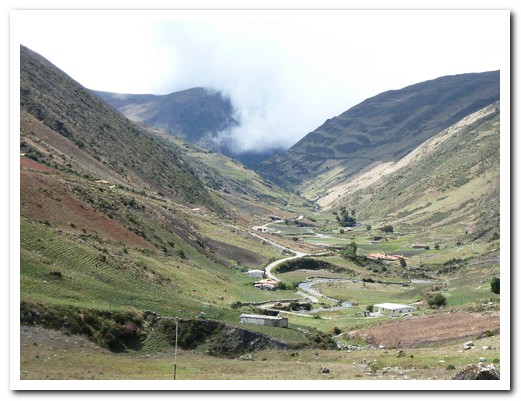
The end of the road at the start of the trek
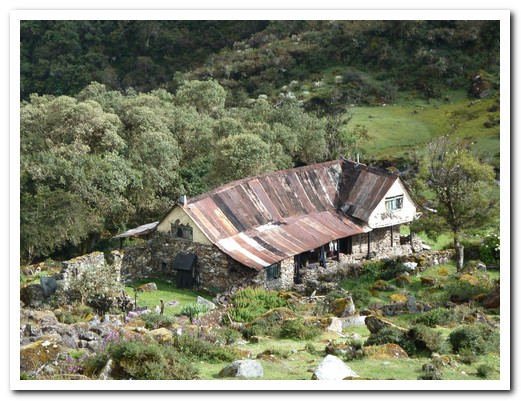
The abandoned house where we camped
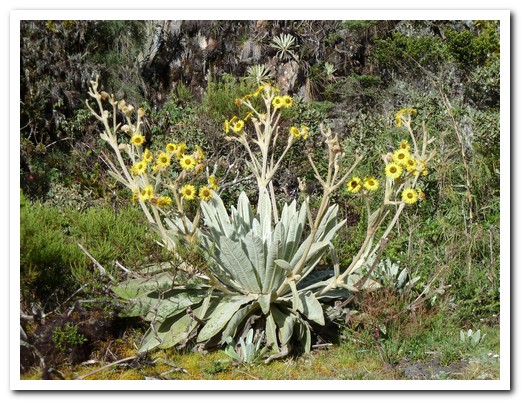
The frailejon plant is only found here in the mountains
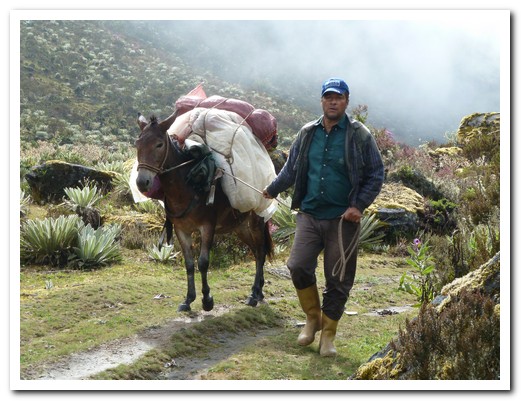
Eliesar with the mule that carried our supplies
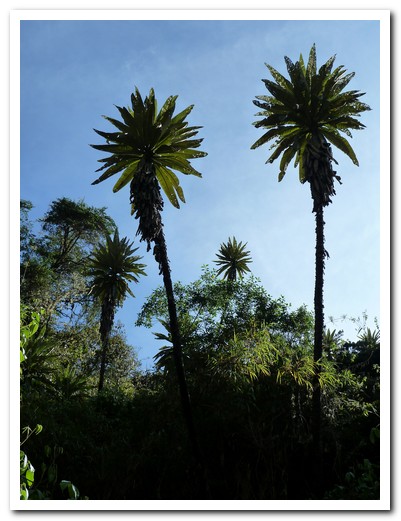
The beginning of the cloud forest
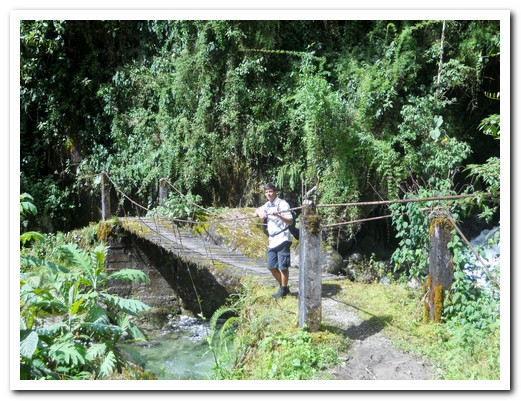
Carlos waiting for us at the first bridge
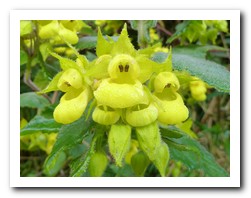
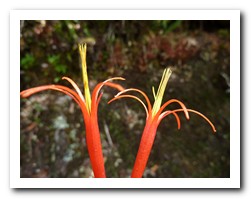
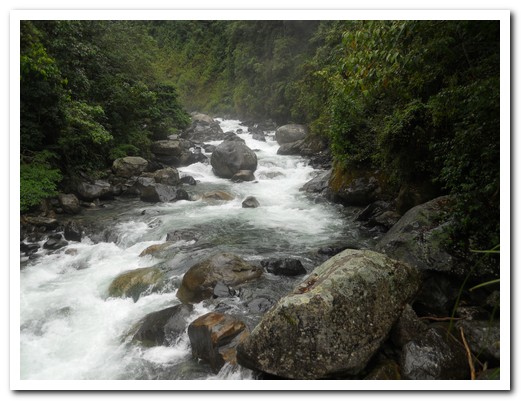
One of many rivers to cross
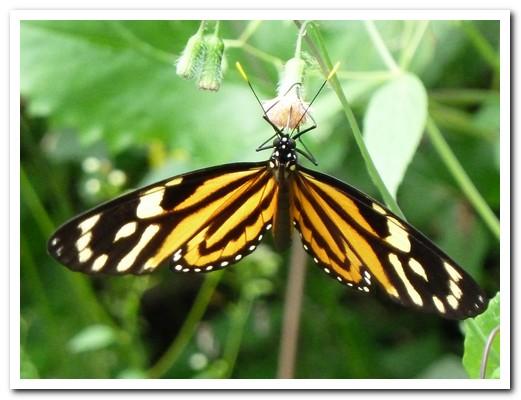
Many many butterflies
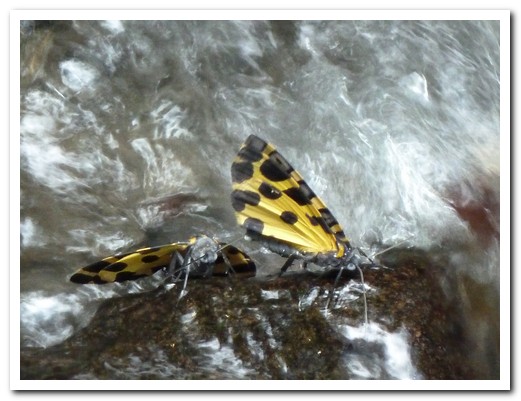
Two butterflies take a drink
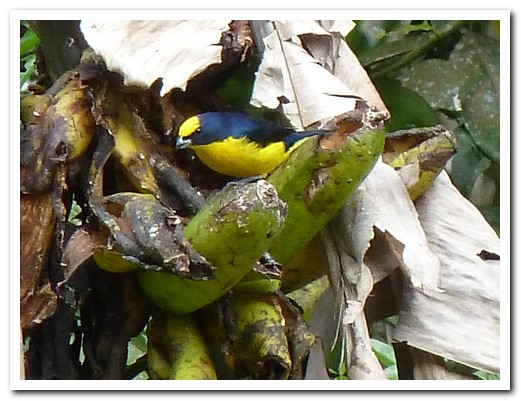
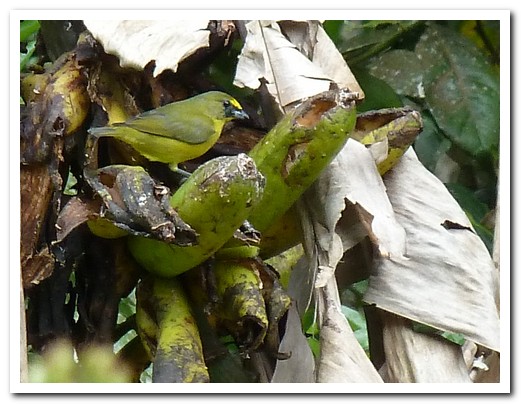
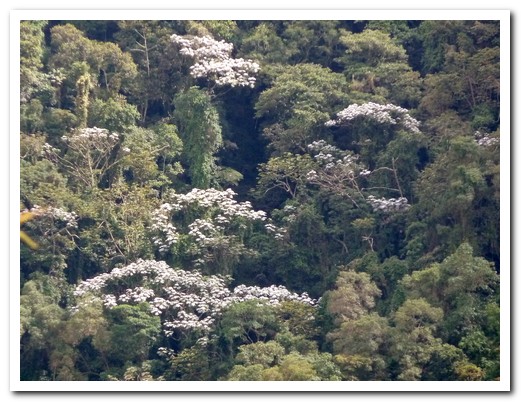
White leaf trees stand out in the high forest
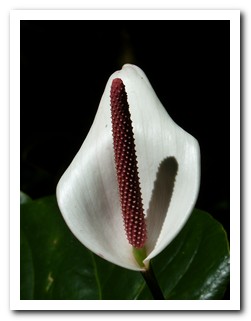

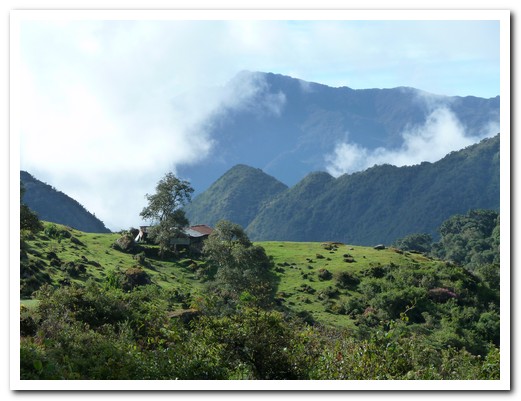
Clouds rolling in
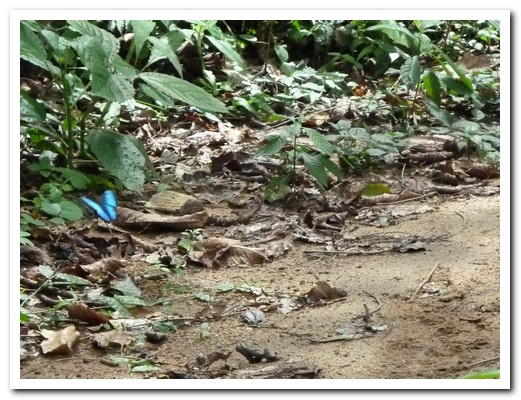
Blue butterfly on the path
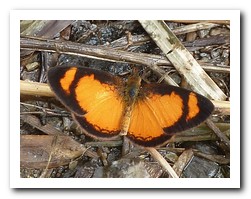

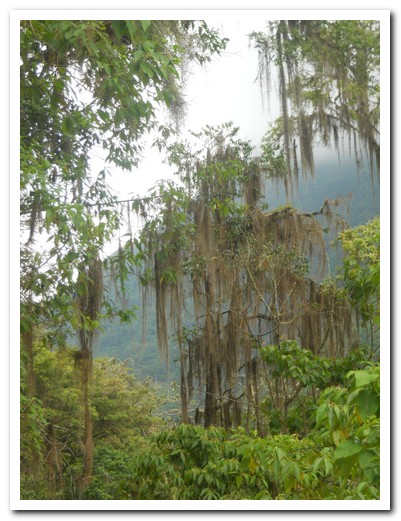
Old man´s beard covers the trees
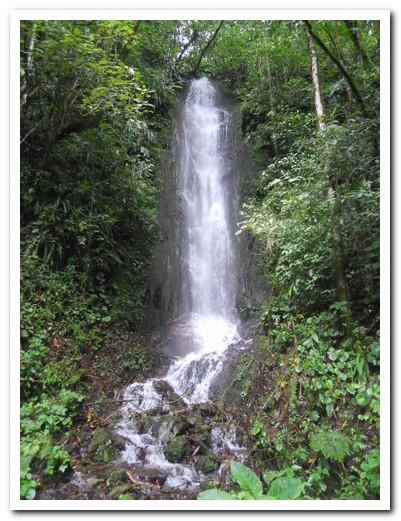
Just one of many waterfalls
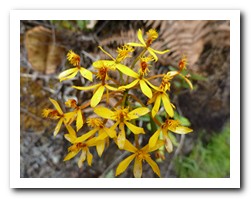

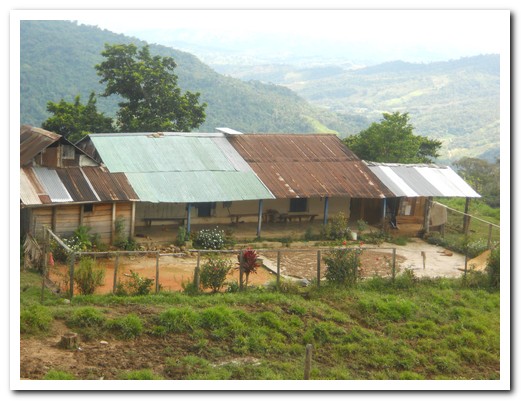
Every house has a coffee drying area

Chickens scratch around in the drying coffee looking for worms
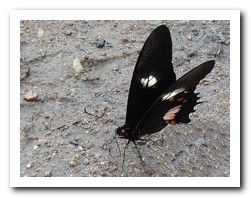
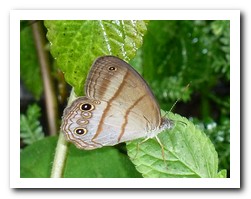
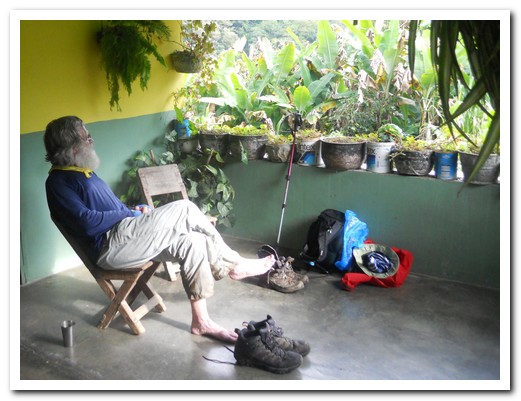
Listening to the rain on the tin roof at Posada Carrizal
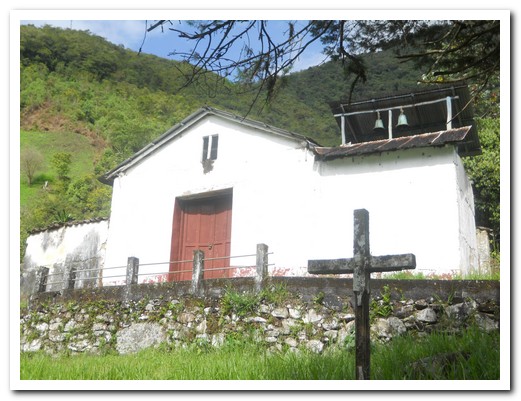
Church at Carrizal
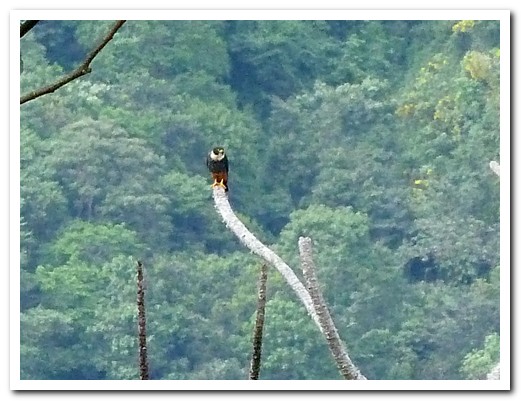
Falcon out on a limb
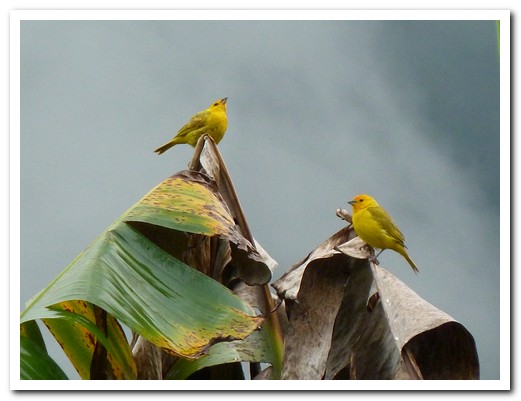
Two little birds in the rain
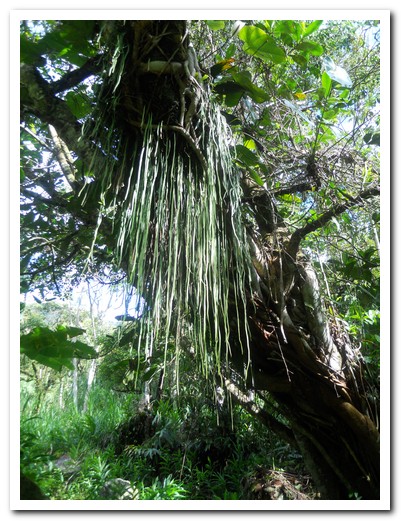
Strange hanging plant

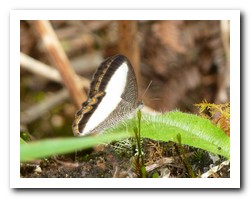
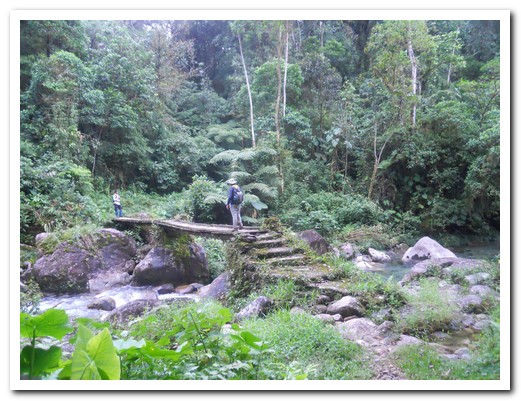
Crossing a bridge in the jungle
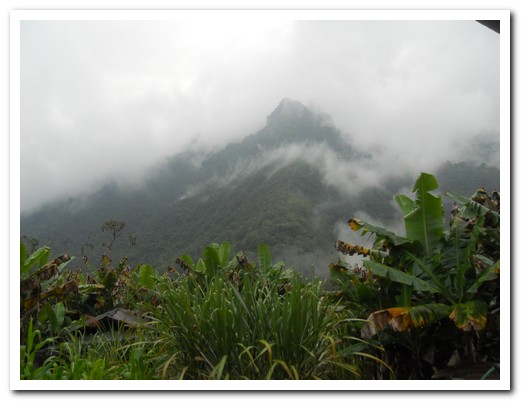
Here comes the rain
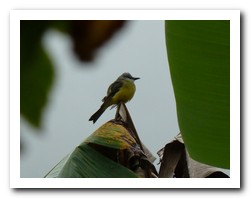
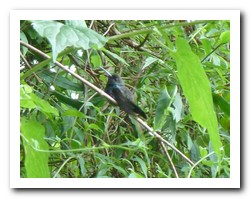
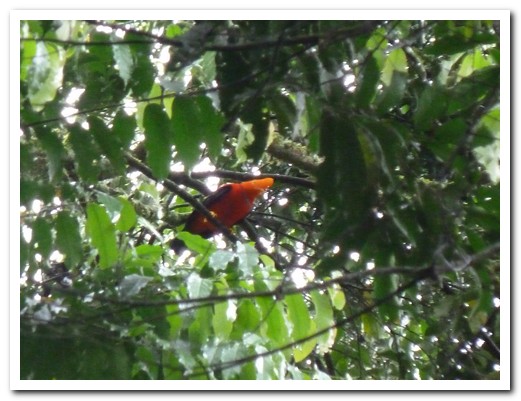
Cock on the rocks
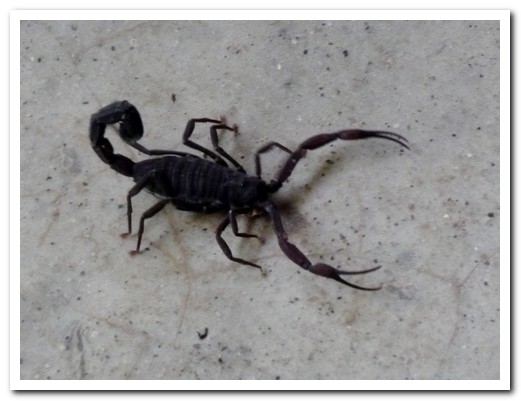
Scorpian about to get into our pack
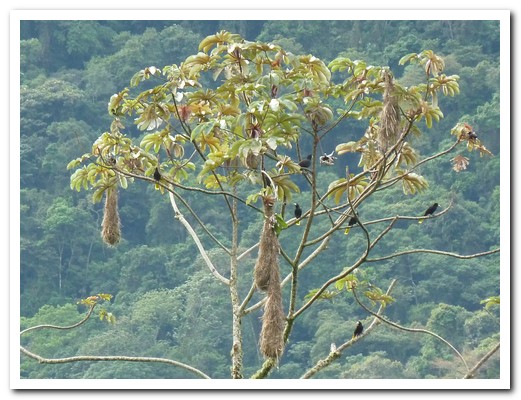
Oro Pendula birds with their nests

Jungle path
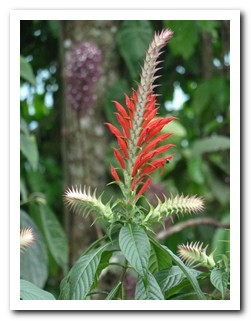
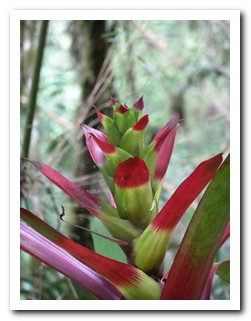
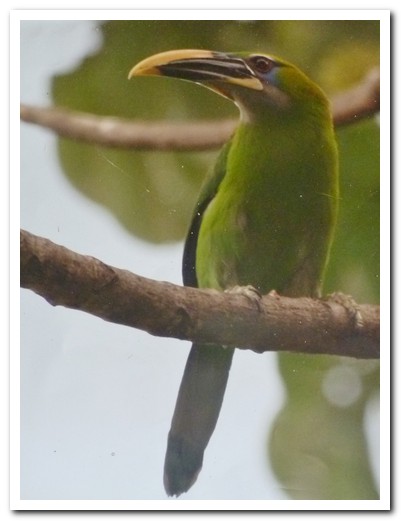
Spotted a tucan!

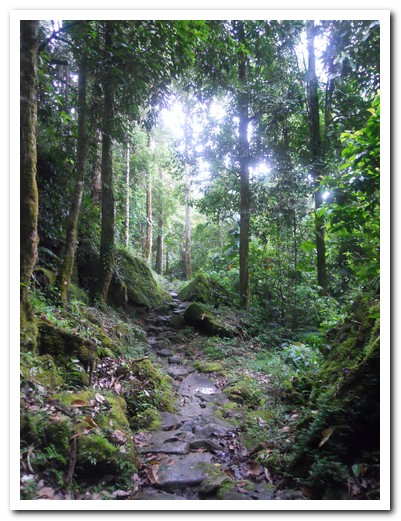
Ancient pre-Hispanic steps

Woodpecker

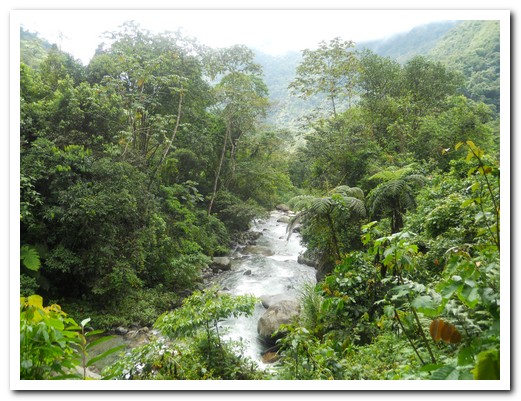
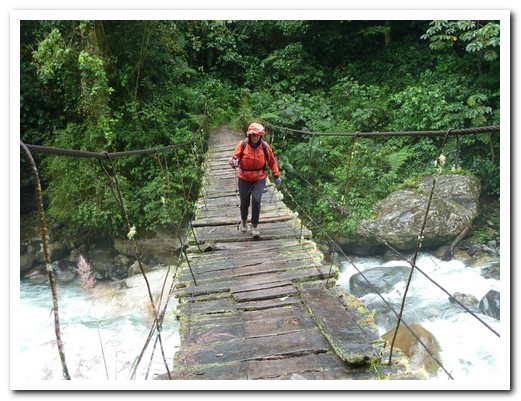
Pam - ¨If the mule can cross it, I can¨
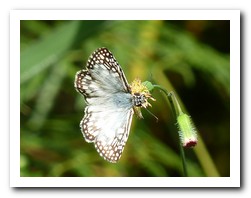
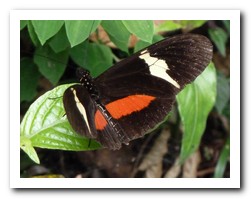

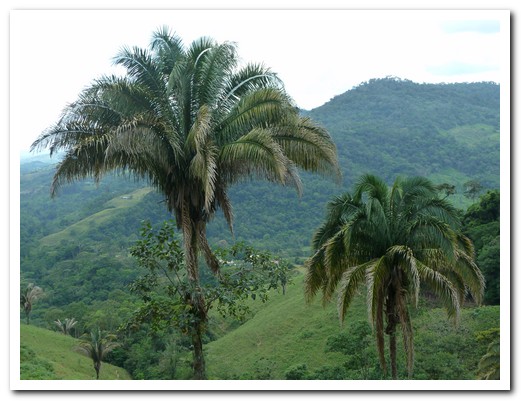
Out of the jungle and into the foothills
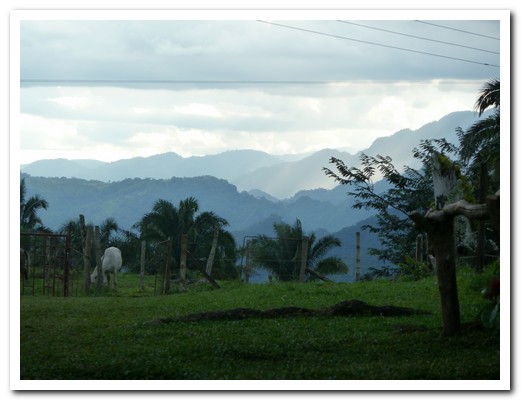
Dusk on our last evening
Northern Venezuela
18th November 2010
Heading north across the country we stopped in Ciudad Bolívar [3] an old river town on the Rio Orinoco. Outside the airport is the Flamingo monoplane that the American aviator Jimmy Angel crashed whilst attempting to land at the highest waterfall in the world – Salto Angel (Angel Falls) which he ¨discovered¨ in 1933.
.
After an all night bus to Maracay [4], avoiding Caracas, we headed on to the Caribbean Sea town of Puerto Colombia [5]. In a tarted up retired US school bus with a powerful sound system pumping out Venezuelan pop/rap a music at teeth loosening volume we raced around the corners on the narrow road which snakes across the 2000 meter high, jungle clad mountains. Puerto Columbia is a quaint fishing village with a pretty palm fringed beach framed by the tropical rain forest of the Henri Pitier National Park. We had to swim in the clear warm water, even if it was pouring rain. It´s a good setting to try Guarapita, a potent rum and passionfruit cocktail. Arepas, fried dense corn pancakes with a variety of fillings, are popular and filling snacks and taste good with salsa picante de terminta, the fiery hot sauce made from termites. The colonial village of Choroní with fine old buildings around the plaza shaded by mango trees is a few kilometres inland.
.
Nine hours and three local buses after leaving Puerto Colombia we arrived in the colonial city of Coro [6] . On the final leg, just as we were congratulation ourselves on making it through the maze of busses in 2 busy terminals, traffic on the autopista was at a standstill for kilometres ahead. Our resourceful driver quickly turned around and followed a smaller parallel road, which continued to narrow. We came to a slender fragile bridge, which the locals assured the driver he could not cross, but everyone got out and the bus raced over. Soon we were on our way again. Big bus music = no problems, no bus music = big problems!
.
Coro was founded in 1527, one of the first Spanish settlements in South America, and is World Heritage. It is clean, well kept and has many beautiful buildings and plazas in the historical centre.
.
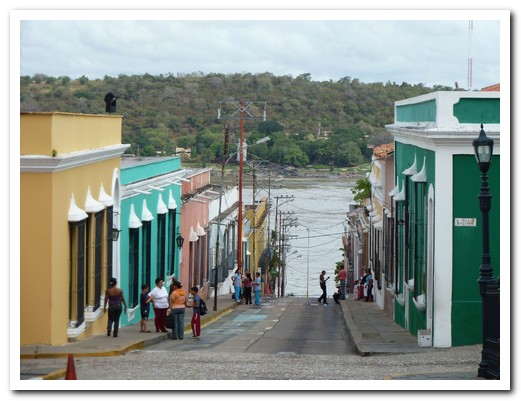
Cuidad Bolívar
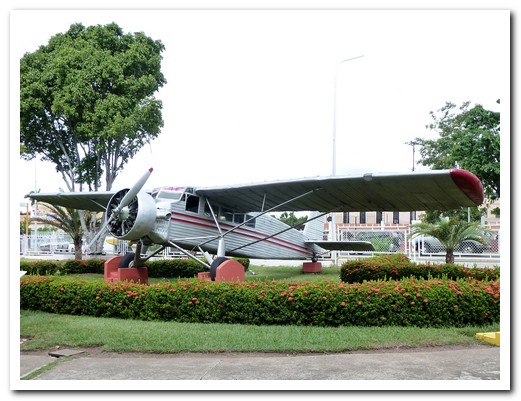
Jimmy Angel´s Flamingo
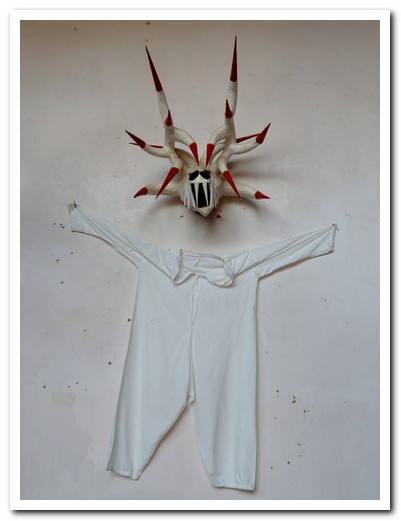
Mask for the Dance of the Devil
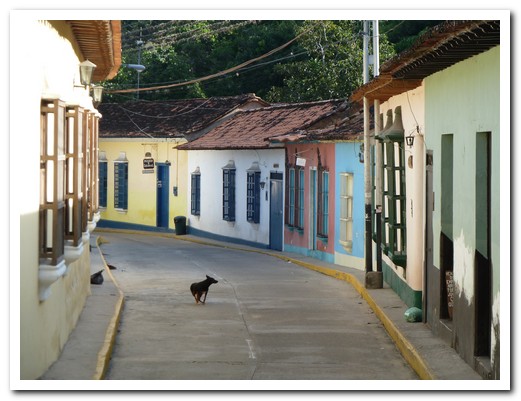
The main street of Choroní
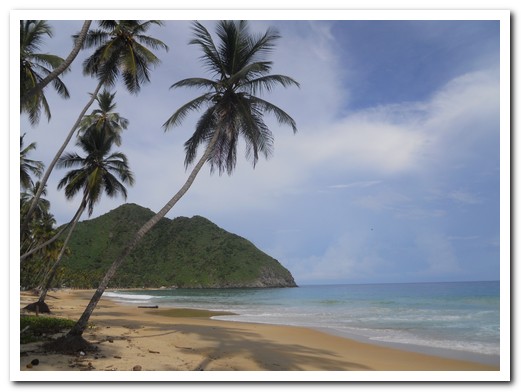
Caribbean beach at Puerto Colombia
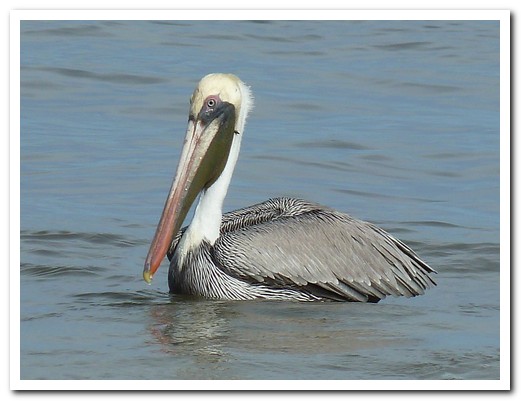
Pelican resting
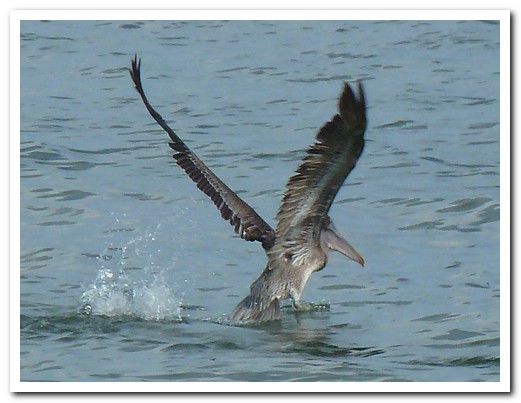
Taking off
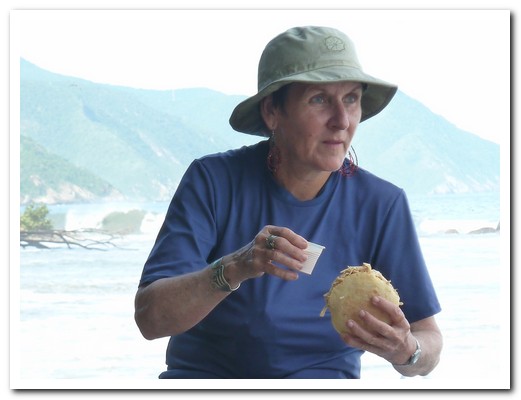
Arepa stuffed with chicken for lunch
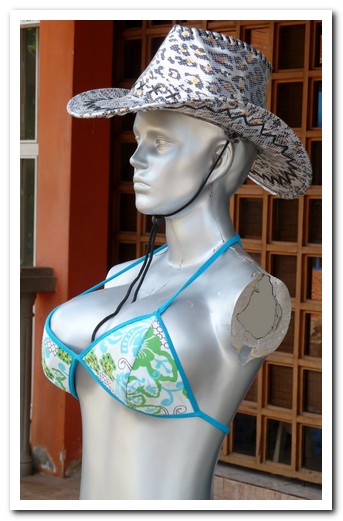
Even the mannequins have cosmetic surgery
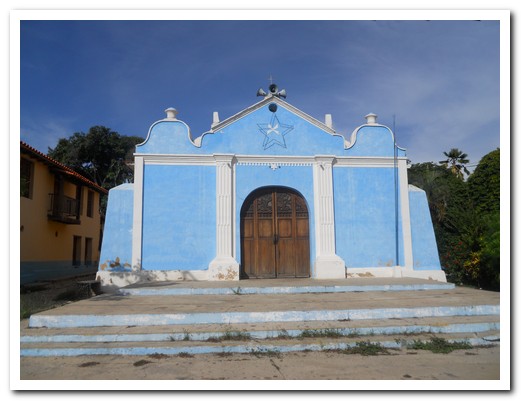
Church at Puerto Colombia
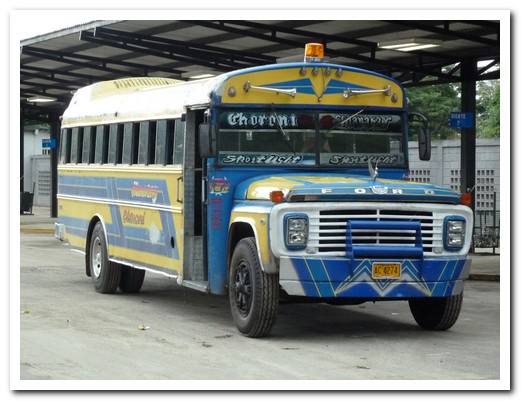
Maracay to Choroní bus
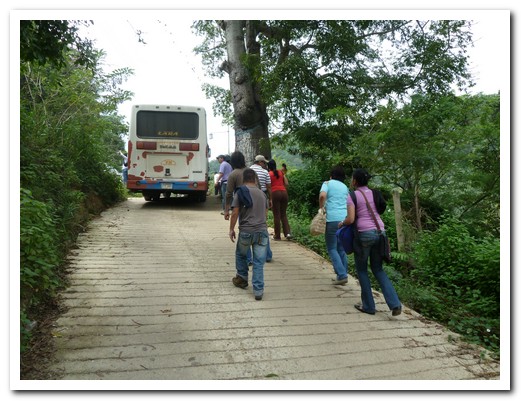
After crossing the narrow bridge, under the power lines and up the hill ...
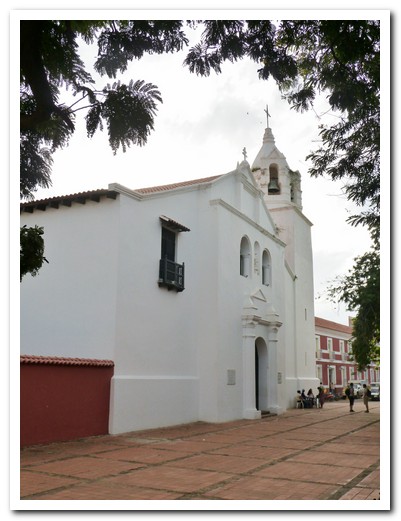
Iglesia in Coro, from 1531
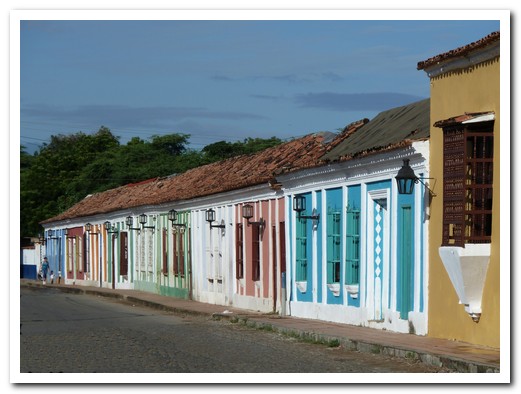
Coro - street of colonial adobe houses
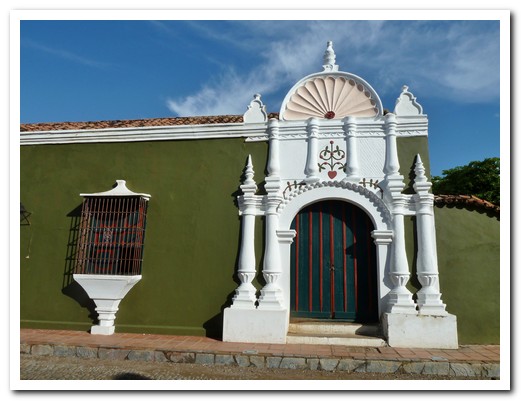
One of the old mansions
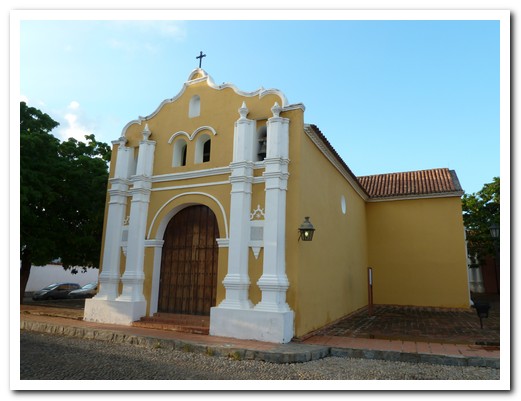
Another early church where the first mass was said in Venezuela
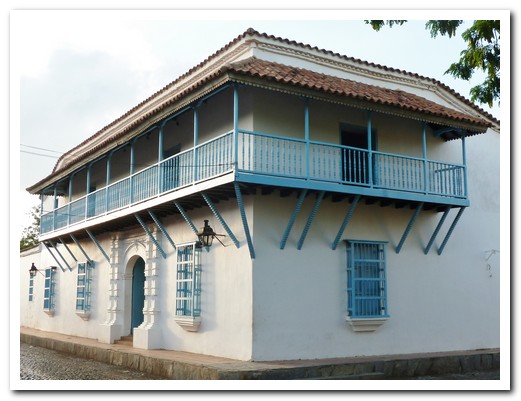
Beautifully restored verandahs
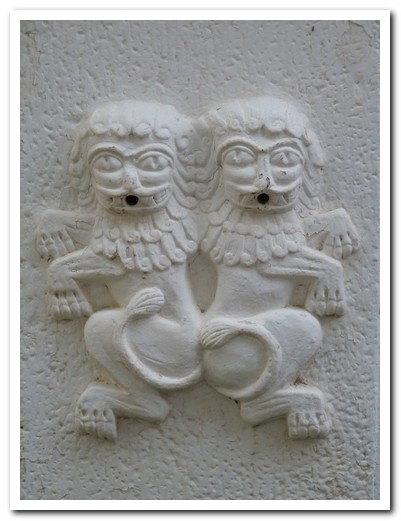
Former fountain
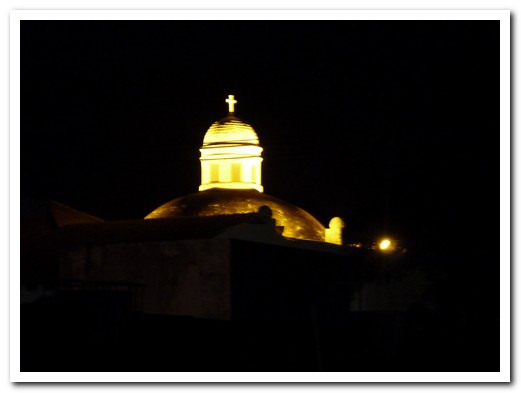
The main Coro church at night
The Lost World
11th November 2010
Entering Venezuela was relatively easy; we were given a friendly welcome at the border and a stranger on the bus gave (yes, gave!) us local currency to get into Santa Elena de Uairén [1] town in a taxi. Not so friendly at the bus station however, an army person took us into a small room and thoroughly searched our packs and grilled us for an hour. Santa Elena is a small safe town. One black market money changer walks around with thousands of dollars hanging out of his back pocket. When Jeff stopped at a shoe repair man sitting on the street to have his sandals fixed, the repair man loaned him a pair of someone else´s shoes (which were in for repair) to use whilst his sandals were being fixed – perfect fit too.
.
New Frontiers Adventures organised a 6 day trek for us to Mount Roraima [2] the highest of a number of massive sandstone table top mountains (tepuis) rising steeply some 2800 metres out of the surrounding Gran Sabana (Great Savannah) in south eastern Venezuela. At the top unique flora and fauna have evolved due to millions of years isolated from the world below, including a tiny black frog that curls itself into a ball and rolls away. Roraima was the inspiration for Sir Arthur Conan Doyle´s book ¨The Lost World¨.
.
Our guide and great cook, Mireille, came to Venezuela from France 20 years ago and stayed. With two porters Alistro and David, we set off taking 2 days and crossings 2 rivers to reach base camp at 1800 meters. We climbed steeply through lush forest, still dripping water from rain the previous night, then followed the sheer rock wall, passing under a waterfall (Paso de Lagrinas) to the top, about 2600 meters. A truly different world awaited us, not as flat as it looks from below. Nature has sculpted the rocks into strange shapes, many unusual plants grow tightly together in water filled rock hollows and shiny white crystals lie scattered about. We camped under a huge rock overhang (Hotel San Francisco) for 2 nights, allowing us time to explore. To keep the place pristine, all the human waste has to be carried down – lucky guides. Then at the bottom, park rangers check the packs for stolen crystals.
.
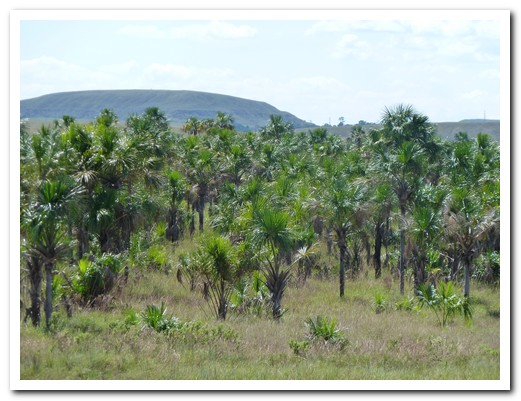
Palm trees of the Savannah
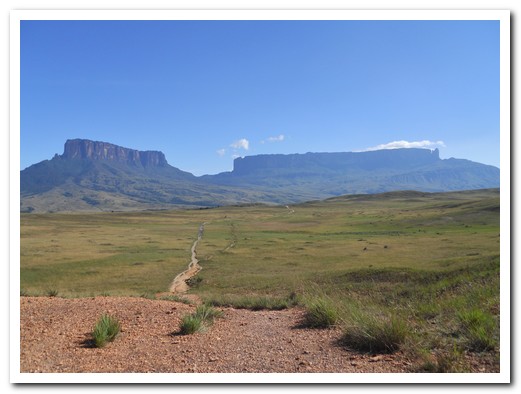
The path towards Roraima (right)
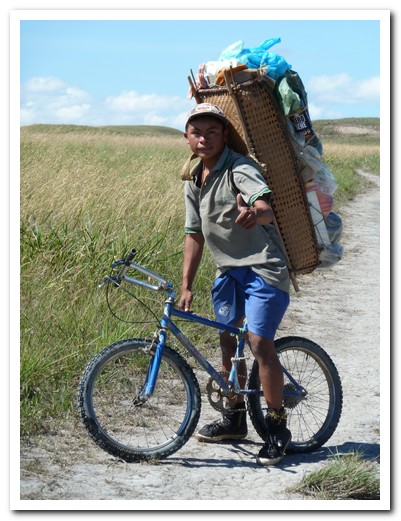
David with traditional basket uses his bike on the flat bits
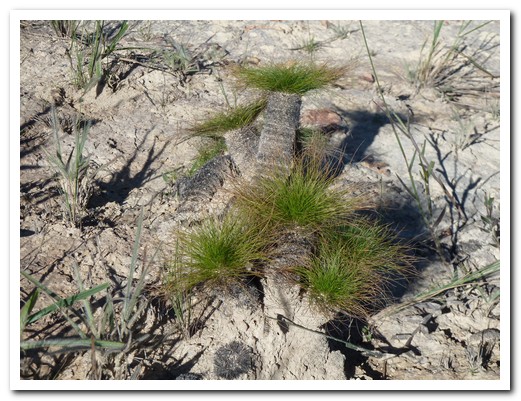
Monjon de suegra (mother in law´s turd)
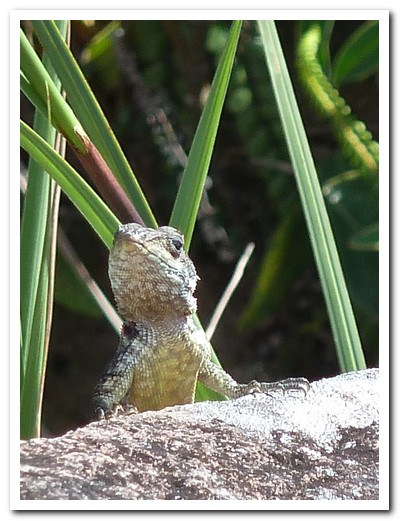
Lizard on a rock
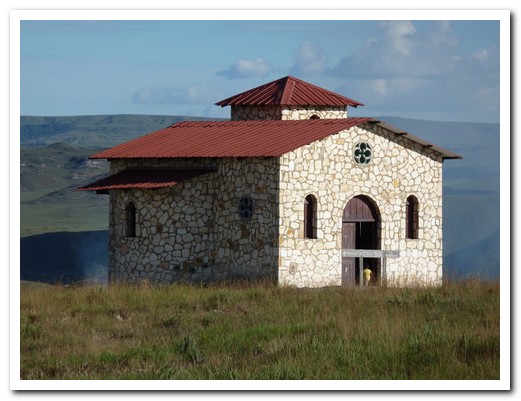
Isolated church used only at New Years
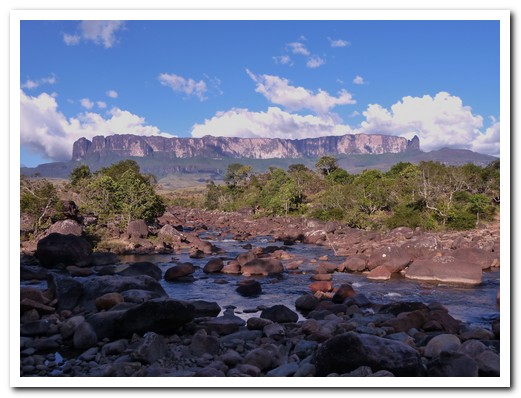
One of the rivers to cross to get to Roraima
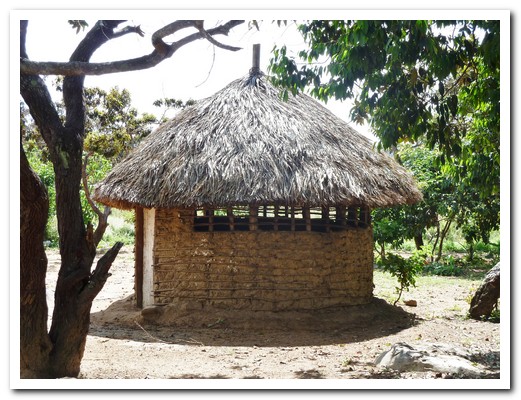
Traditional indigenous hut
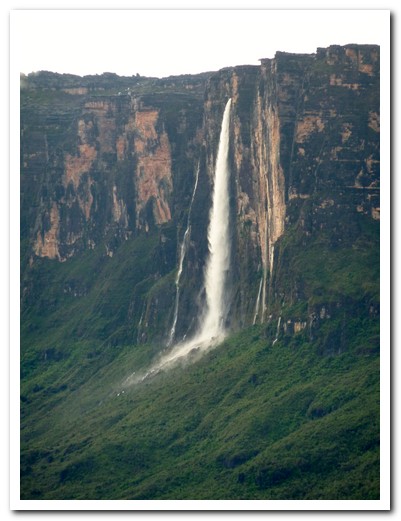
One of the many waterfalls - 2nd highest in Venezuela
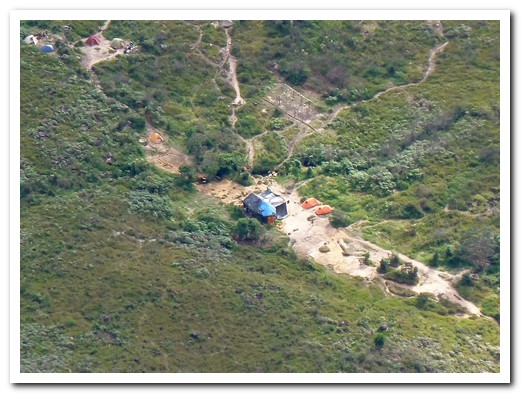
Base camp
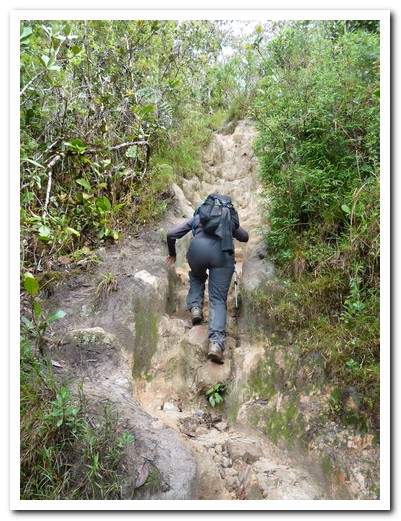
The path gets steeper

Vertical rock wall
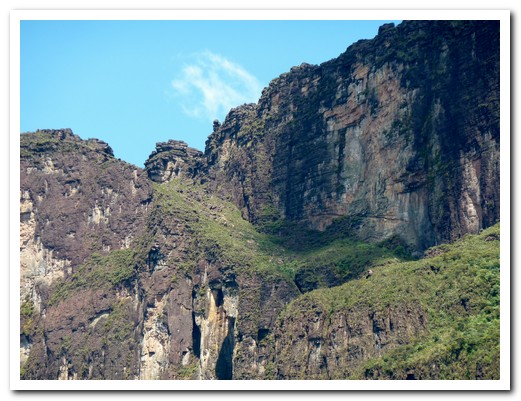
The Ramp is not as easy as it looks
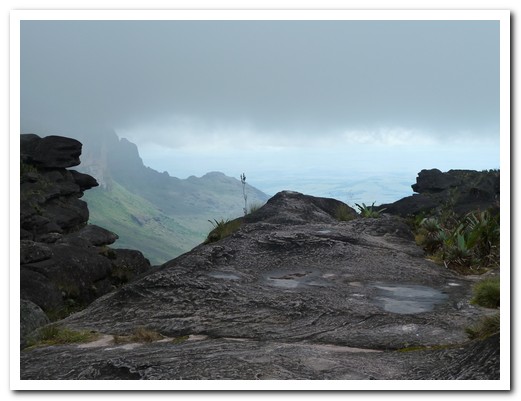
Made it to the top!

One of many strange looking plants on the tepui
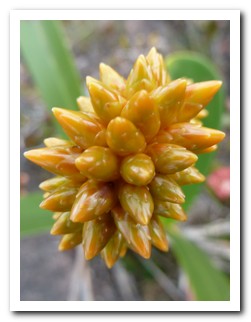
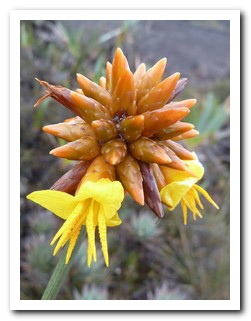
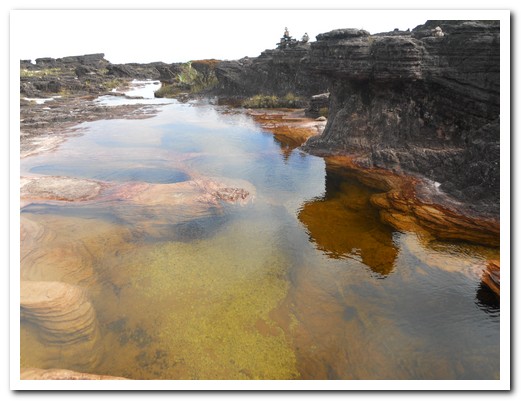
The jacuzzi
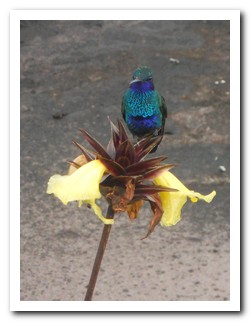
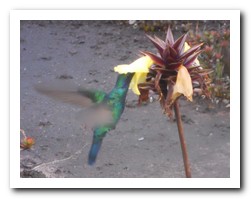
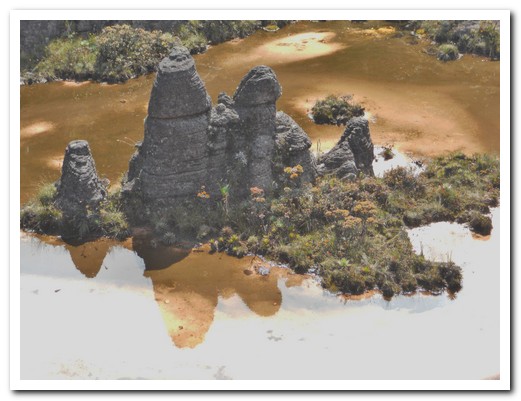
Rock family reflected in a pool
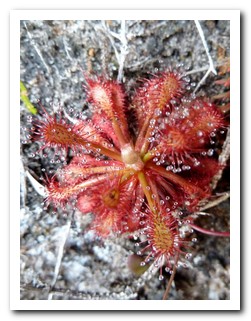
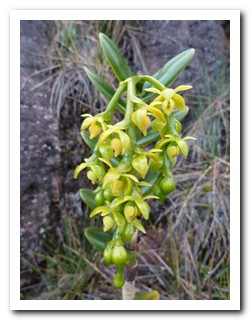
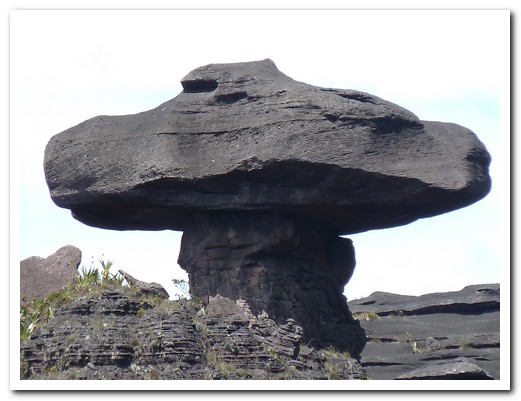
One of the strange rock formations
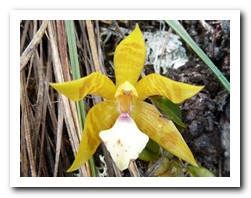
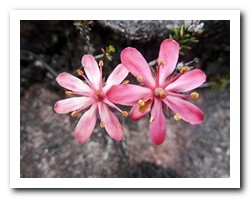
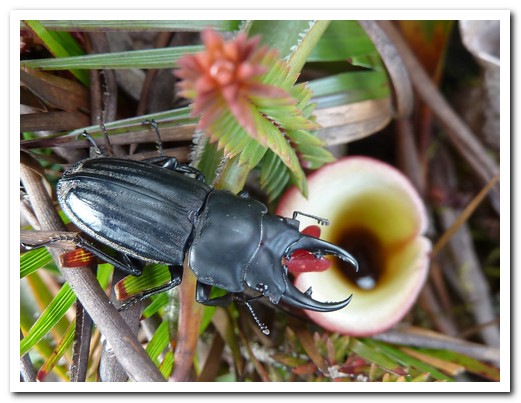
Beetle looking for food in the carnivorous plant
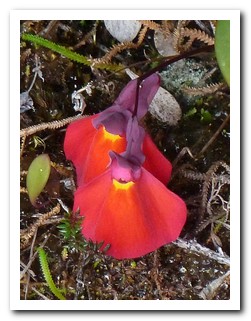
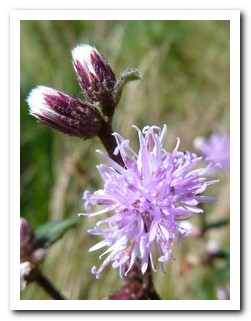
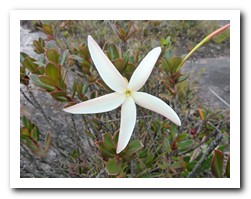
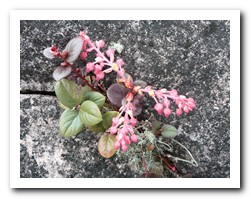
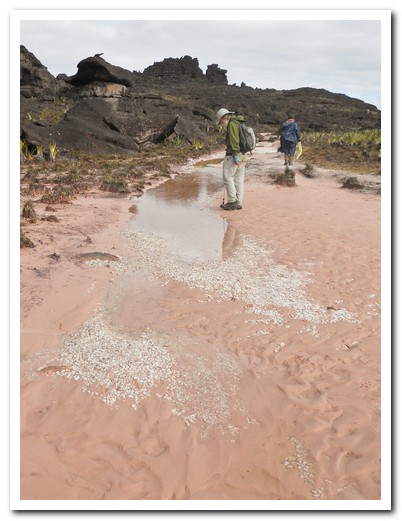
Crystal valley
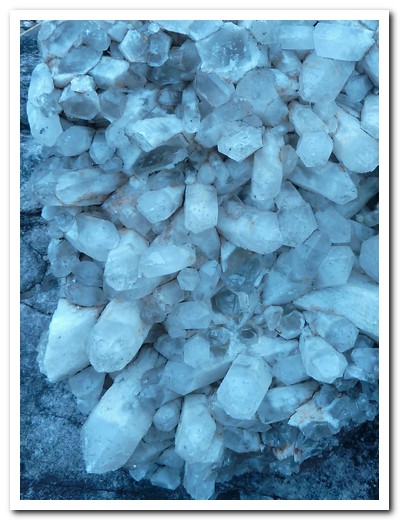
Crystals
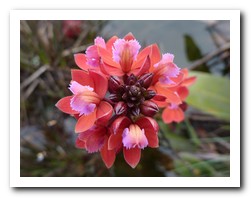
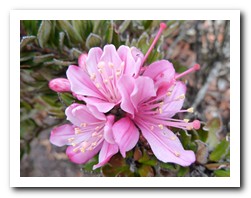
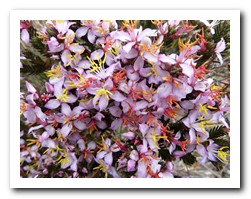

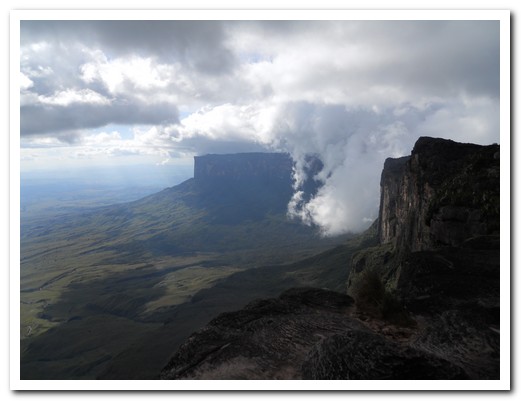
Clouds rolling in
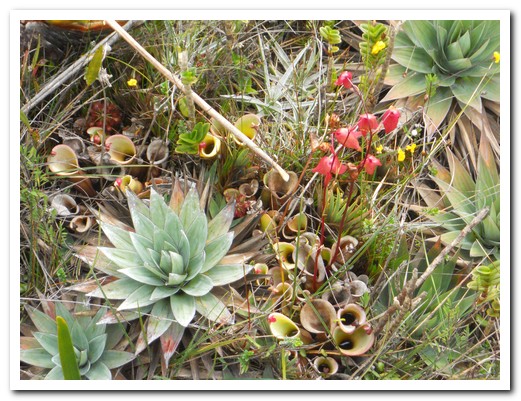
Different plants grow close together
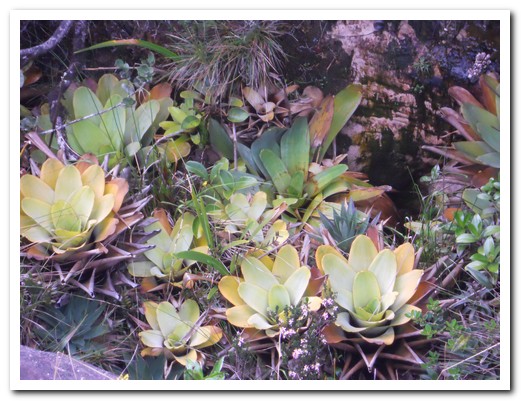
Plants of the tepui
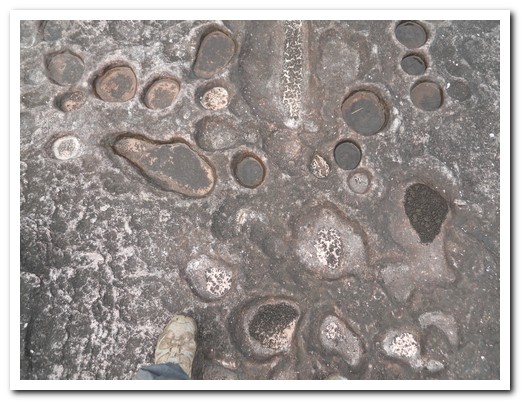
Surface of the rock looks like footprints

Fidel Castro
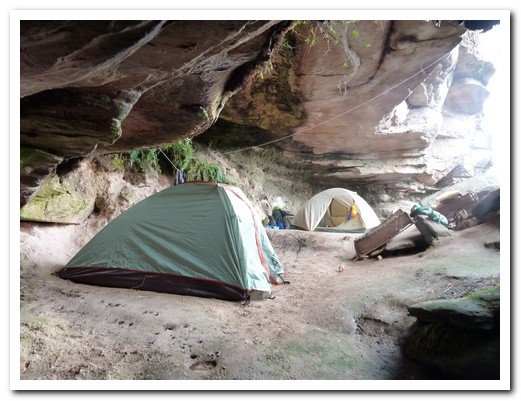
Hotel San Francisco
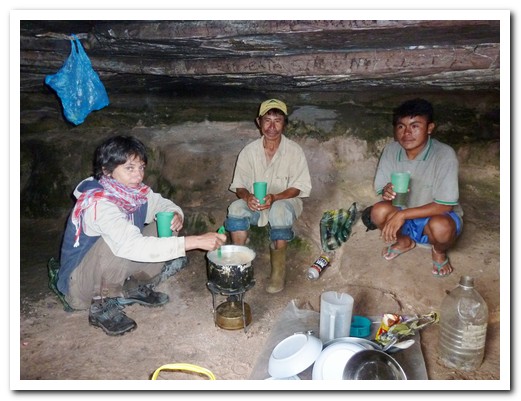
Mireille cooking with Alistro and David looking on
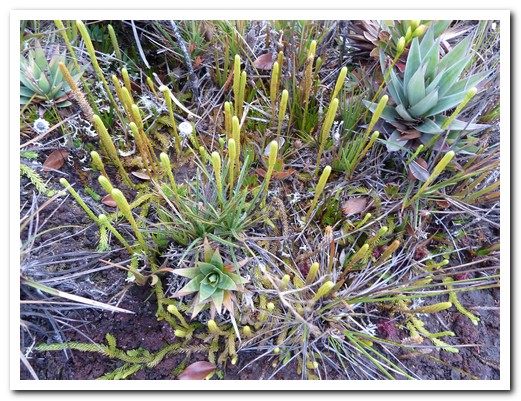
Prehistoric plants
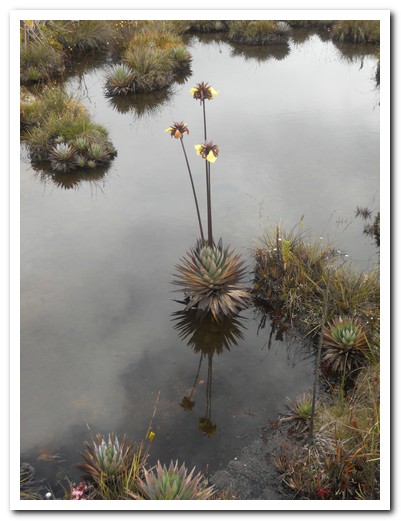
Reflection
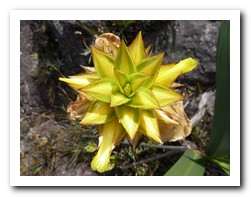
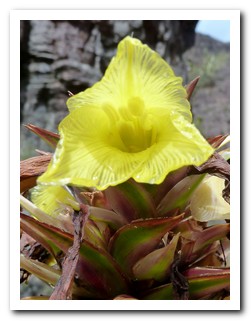
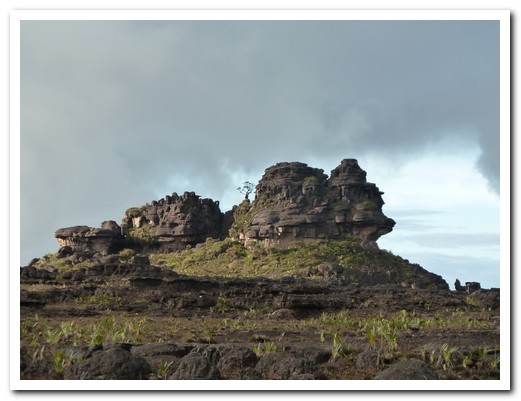
Rock formation

Coloured lichens
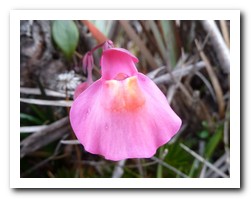

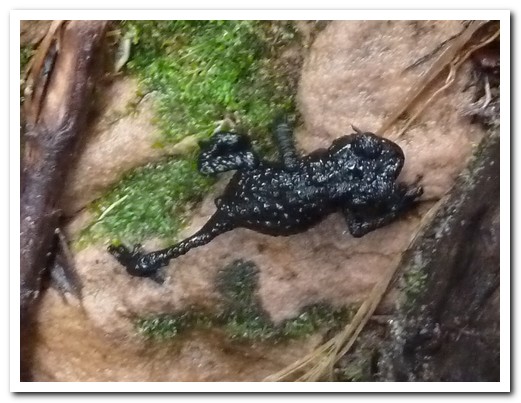
Tiny black frog only found here
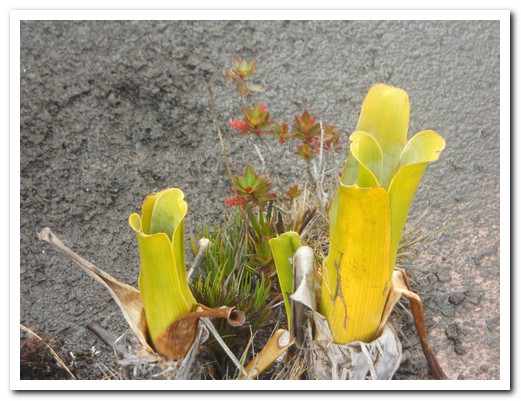
Large carnivorous plant
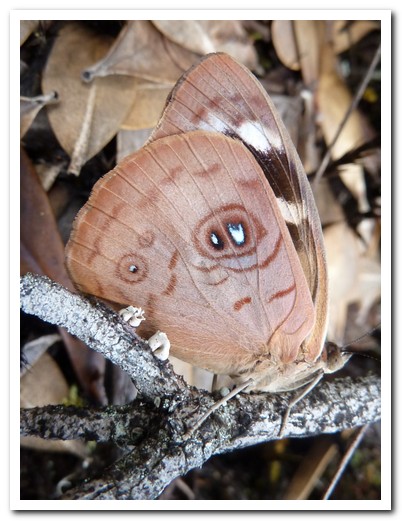
Butterfly
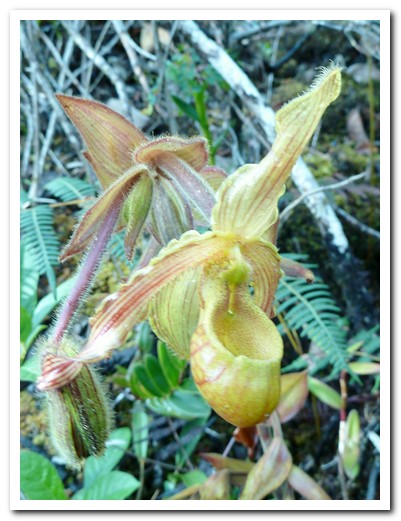
Orchid
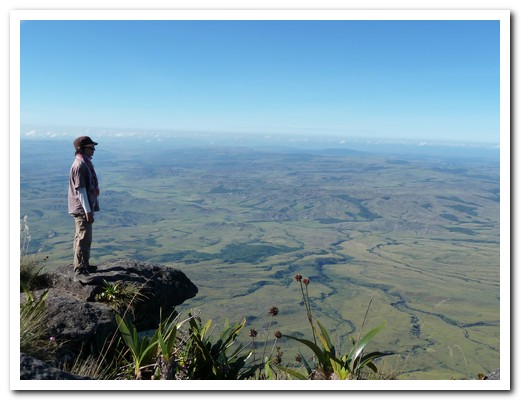
Mireille points out the savannah below
The Amazon – Santarém to Manaus
02nd November 2010
The Jesuits established Santarém [18] with a palm frond church in 1661. Today it is a hive of activity as the colourful river boats of all sizes lining the waterfront are loaded and unloaded along narrow wooden planks. Come lunch time, the smell of fresh fish grilling over charcoal at the fish market was too good for us to pass up. In the evening when the sultry heat abates and a cooling breeze drifts up the river, the sky puts on a glorious display.
.
Our boat, the N/M Cidade de Santarém 11 departed on time at 1300 (mas o menos) surrounded by river dolphins. The Santarém 11 is much smaller than the Rondonia which bought us from Belém and we were the only foreigners on board. We headed upstream at a leisurely 8 knots, again hugging the shoreline. It does not get much better than a cold beer on the aft deck watching the lingering tropical sunset – the voyage up the Amazon must be the world´s greatest river journey.
.
Nearing Manaus [20] we passed through a distinct band of two different coloured waters (Encontro das Aguas) where the waters from two rivers meet and run side by side, without mixing, for several kilometres. Any romantic notions we had about Manaus soon disappeared; it is a bustling crowded city of 2,000,000 people. There are some remnants of past rubber boom glory including the Teatro Amazonas, the opulent 1896 opera house filled with Italian marble and glass, Scottish cast iron and Brazilian wood sent to Europe to be carved. The 1882 cast iron city market building which looks like the famous Les Halles market in Paris with Amazon products was under repair.
.
Brazil might have been the most expensive country in South America, but people are friendly, noisy and sway their hips to any music. Body image news has not reached Brazil; they let it all hang out. Bye bye Brazil, land of ice cold beer and toilet paper! We are now heading overland north via Boa Vista [21] to Venezuela.
.
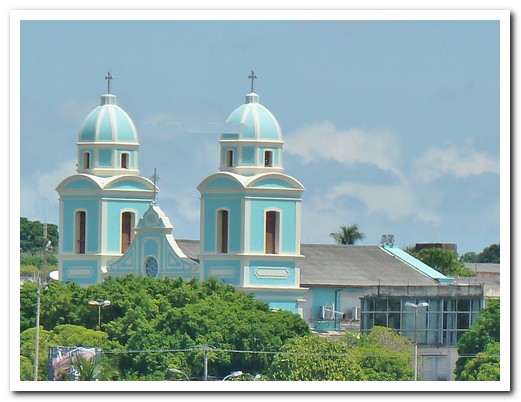
At Santarém, a blue church was built on the site of the palm frond Jesuit one
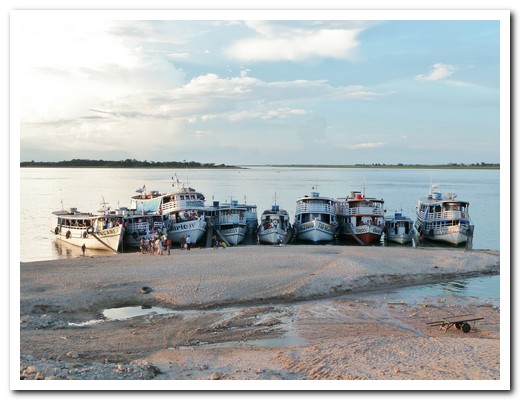
Pretty boats all in a row
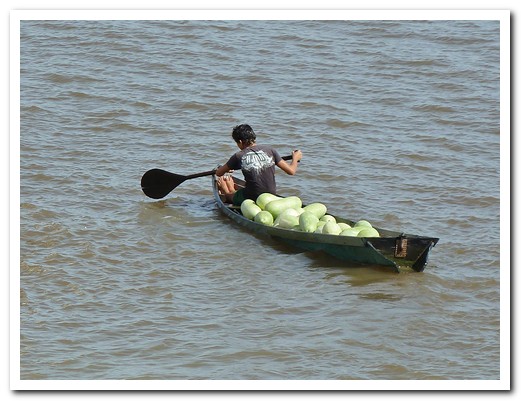
One more watermelon and it sinks!
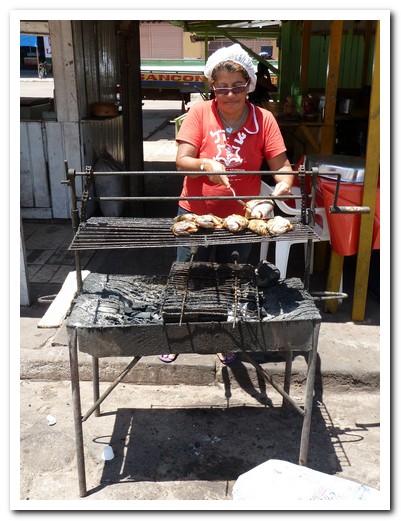
Fresh grilled fish for lunch
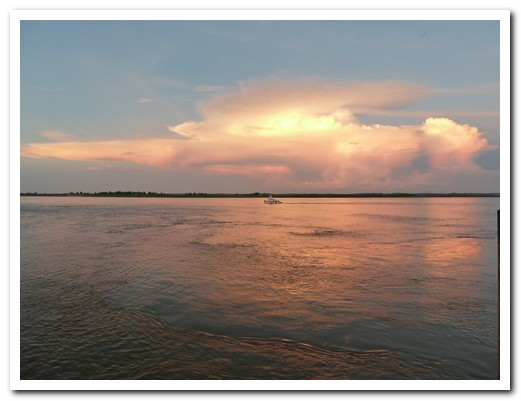
Santarém sunset
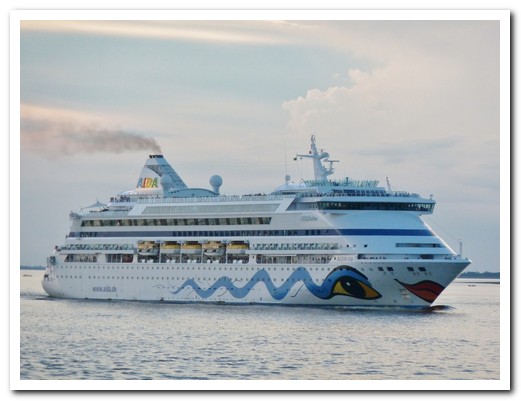
We were surprised to see a huge German cruise ship here
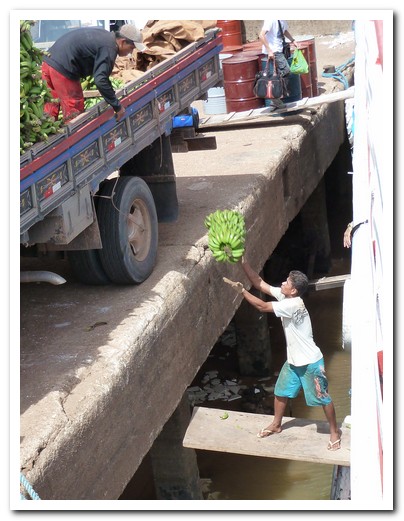
Loading the bananas
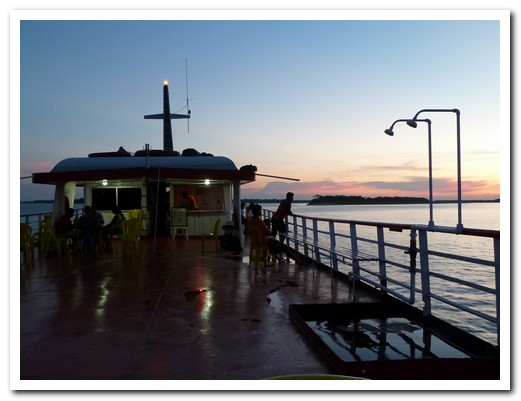
Waiting for sunset on the Satarém 11
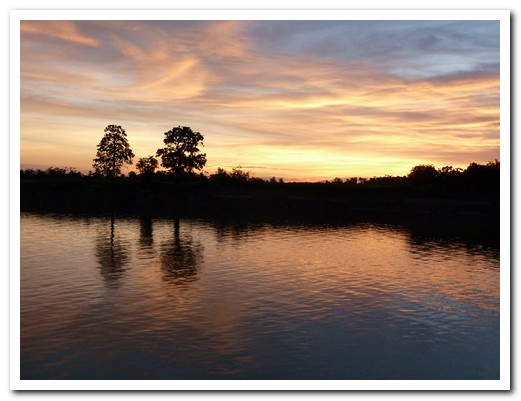
Sunset
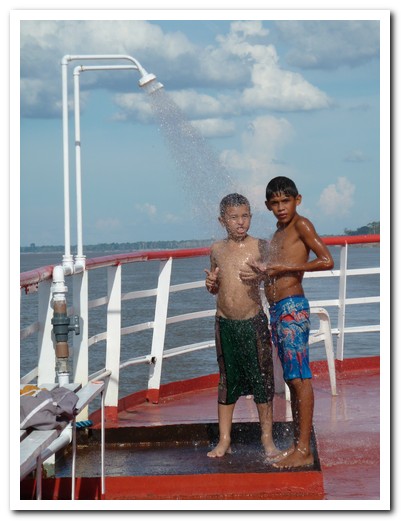
This is how to cool off
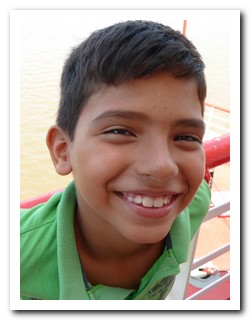 |
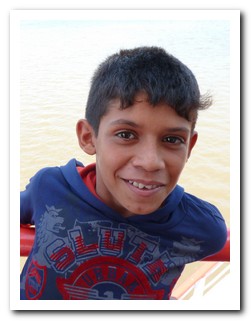 |
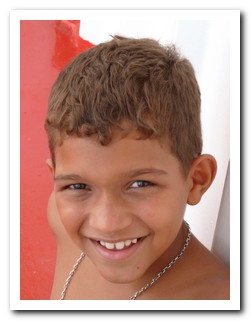 |
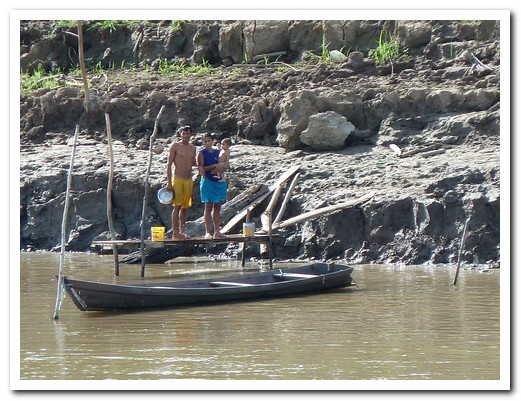
The family bathes in the river
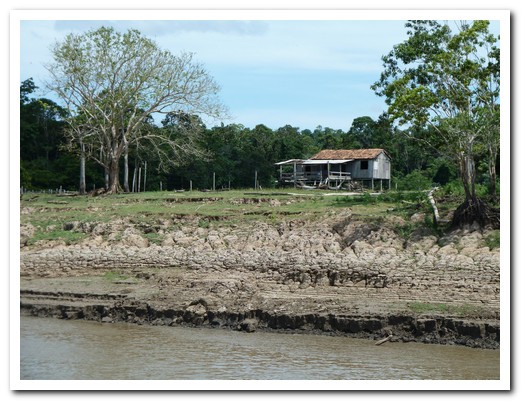
The river banks are more open and eroded here
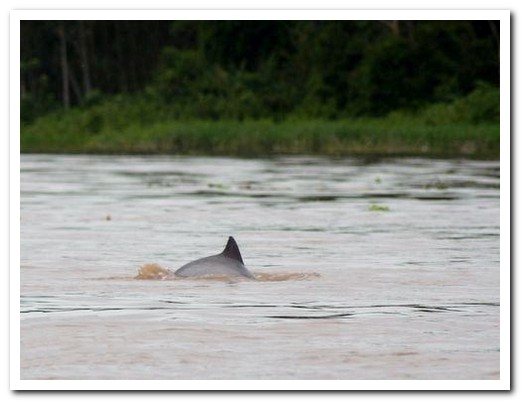
A grey river dolphin
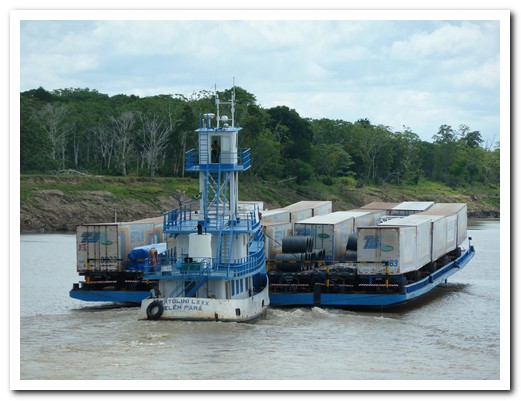
The river is the road - everything and everybody goes by boat
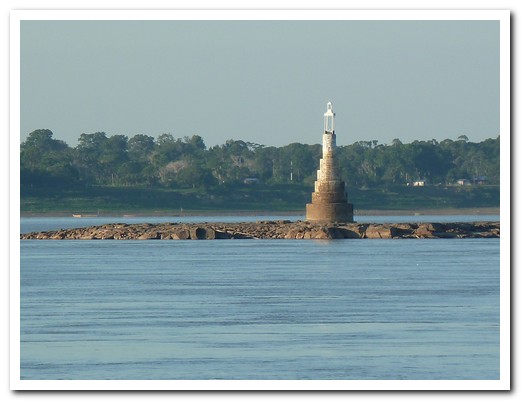
A lighthouse marks rocks (submerged in the wet season) in the river
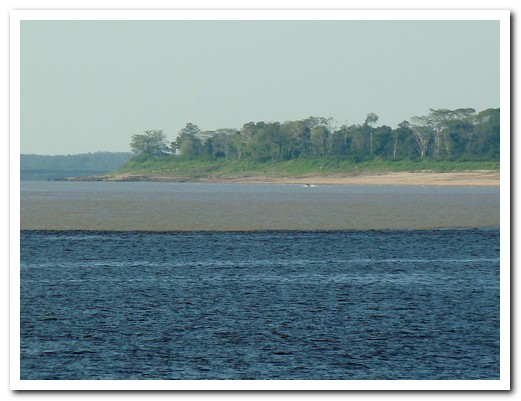
Encontro das Aguas - amazingly the waters don´t mix even with boats churning it up
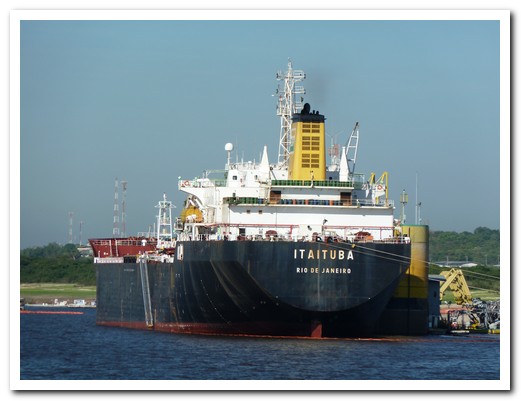
Manaus has a sea port, 1500 kilometers from the sea
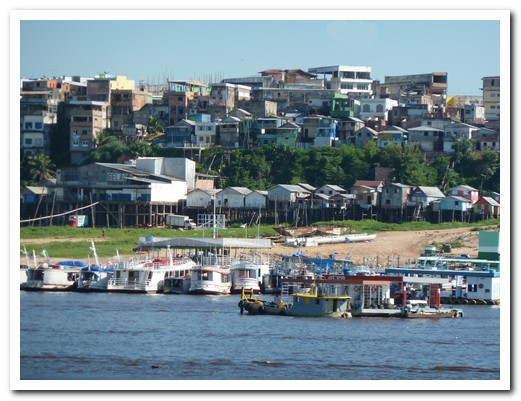
Houses on stilts; the water can rise 10 meters in the wet season
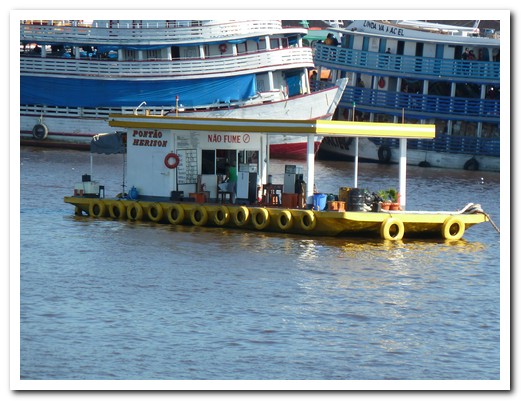
Petrol station afloat
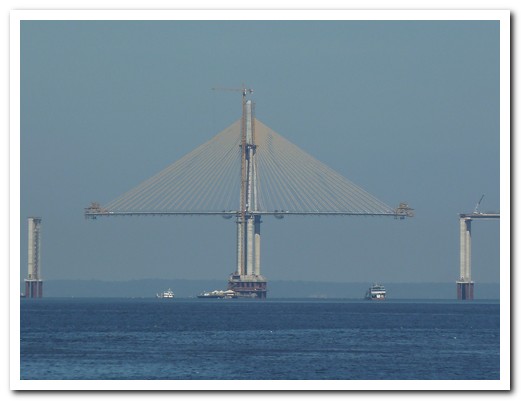
¡Que horror! A bridge over the Amazon (actually the Rio Negro)
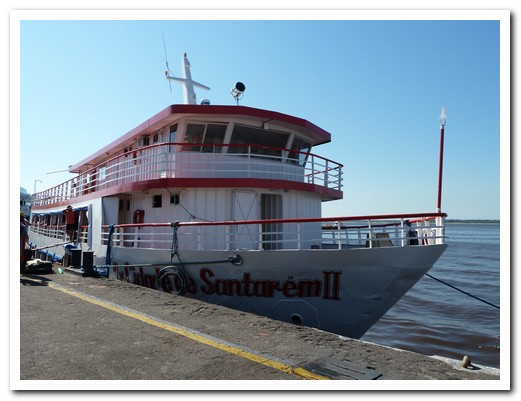
The N/M Cidade de Santarém 11 at the dock in Manaus

The Opera House - it seems out of place in the steamy jungle of Manaus
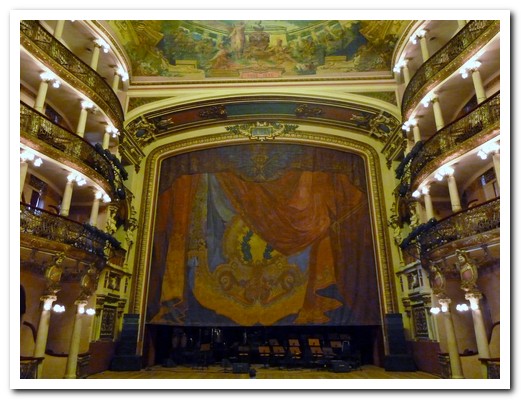
Inside the Opera House
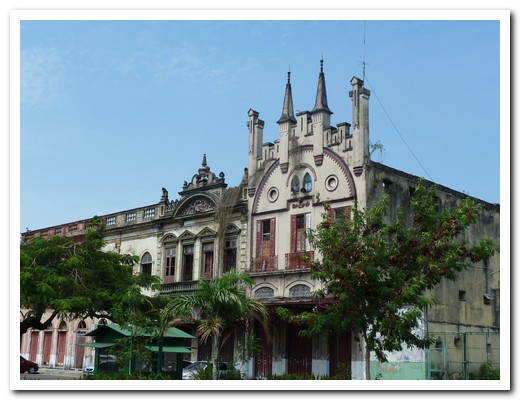
Crumbling buildings near the waterfront
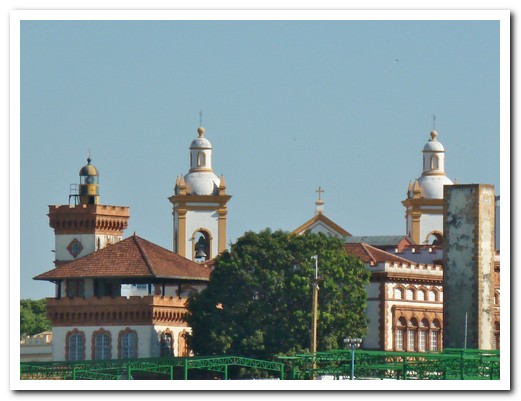
Customs House with the Cathedral behind

Manaus Public Market in the early days
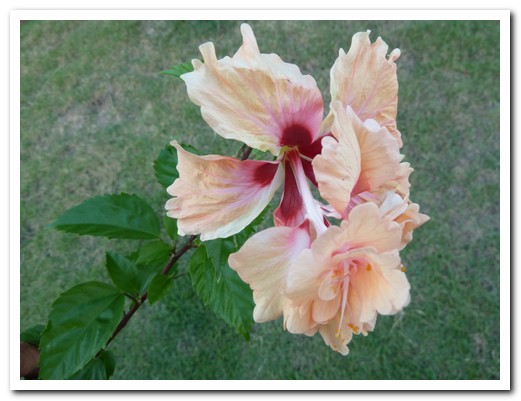
A double hibiscus
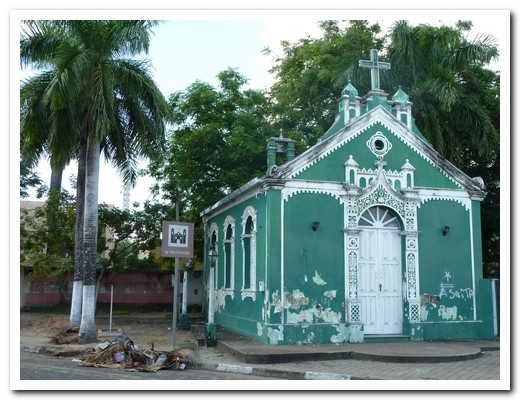
A chapel at Boa Vista near the Venezuelean border